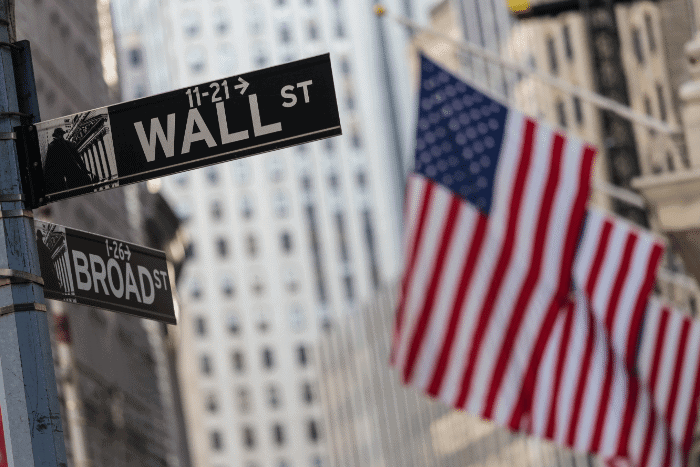Dateline: Singapore
Negative interest rates have gone from an impossible fantasy just a few years ago to a reality that now impacts hundreds of millions of savers around the world.
Thanks to the lingering impact of the Great Recession, central banks started experimenting with the idea that you would pay the bank to keep your money rather than the other way around.
Here in Singapore, rates on bank deposits are quite low, and just like about everywhere else in the world, the US dollar is now the latest to fall into “zero interest” territory for savers.
Negative interest rates started in the European Union. Then came Japan. Sweden, Switzerland and Denmark – not part of the eurozone – are negative, too.
Now, the United States has lowered interest rates to zero and negative rates may be next. The idea is to encourage lending and create economic growth, but it’s a last-ditch option, and it’s hurting savers.
In this article, we’ll discuss several reasonable strategies for avoiding negative interest rates from eating into your savings, and even how to benefit from a negative interest rate policy.
It’s bad enough that a bank savings account didn’t keep pace with inflation before; now it seems downright impossible to earn any kind of decent yield.
What are Negative Interest Rates?

The concept of negative rates is that positive rates (those above zero) reward lenders for taking a risk, negative rates punish banks that want to “play it safe” by keeping cash. You may remember how many banks were loathe to make loans in the wake of the Great Recession.
Negative interest rates occur when savers pay interest rather than having it paid to them by a bank or a borrower. The converse is also true; borrowers are credited interest for the privilege of borrowing money.
Such a practice may be the norm in Europe and Japan, but it’s rather unusual as an economic strategy and generally occurs only during a deep economic recession when policymakers have tried everything else to no avail. It’s all done to encourage banks to lend money and for people to spend it rather than do something so “dumb” for society as to “hoard” it.
As I personally have zero debt, this doesn’t help me, although it did drive stocks through the roof as companies loaded up on cheap money. If you prefer to save and invest rather than to borrow, it’s hurting you, too.
Donald Trump has complained that the US not having negative interest rates has hurt the economy. Janet Yellen didn’t disagree, although Jerome Powell did. He claimed that the US dollar being the only “safe haven” currency with any kind of yield drove up the value of the dollar and hurt exports.
Oh, and he wants to refinance his country’s massive debt at a discount.
How do Negative Interest Rates Work?
Real interest rates have actually been negative for some time. Real interest rates capture the effective rate on capital after factoring in inflation. The tiny yields banks pay have certainly not kept up with the headline inflation rate.
In today’s interest rate environment, the actual target rates are below zero. The goal is to spur businesses to spend money by making it incredibly cheap to do so. In such an environment, everyone is effected because banks have to pay to park your money.
This negative interest rate policy, or NIRP, is designed to spread cash reserves around the economy but doesn’t always work. If it worked, the negative rate policy wouldn’t be needed forever.
The effect of NIRP is that banks have to decide whether to pass their costs along to customers and risk money being taken out of the banking system or to absorb the cost. When banks in Europe realized that depositors wouldn’t mind paying the freight, they introduced a raft of new bank fees and made it more expensive to deposit money for free.
The days of earning any kind of yield on your money are over… at least in the West. In Denmark, they even cheer how nice it is for irresponsible people to get free money while savers get the shaft.
The Problem with Negative Interest Rates

One big problem with a negative rate policy is that it encourages bubbles and risky lending. We really haven’t learned all that much from the days of the “NINJA” loan – no income, no assets, no job – pumped all over in the mid-2000s.
Today, banks are back to loaning money through subprime car loans, unconventional mortgages, and other lending practices. In the United States, banks and the government work together to loan students as much money as they want to attend college, no matter they study or even if they finish.
When an eighteen-year-old can borrow money for a few percentage points from a bank encouraged to make loans to anyone, you’ve got a problem.
Japan thought the policy would solve its economic malaise, but in Japan, that seems unfixable. Critics also say that the long-term negative rate policy we’ve seen may be hard to reverse after being this way for so long. Imagine an entire lifetime where anyone with a pulse can borrow money for anything almost for free.
So, where can you store your cash without paying for the privilege?
Alternatives to Negative Interest Rates
Here at Nomad Capitalist, we believe that diversifying globally offers the best alternative to economic insanity in the western world. Economies and cultures outside of our own offer hope.
While western countries from France to Australia are fighting a “war on cash” and forcing citizens to have their transactions tracked, places like Dubai and Hong Kong are knee-deep in cash transactions.
And while some countries are lowering interest rates, others are raising them.
1. Foreign Currency Deposits
While the US dollar, euro, Japanese yen, and Scandinavian currencies all pay bupkis, foreign currencies may still pay a yield. While you may not be so adventurous to claim the 13% yield paid on one-year term deposits in Mongolian tugrik, there are less exotic options as well.
Currencies like the Emirati dirham and Hong Kong dollar are (essentially) pegged to the US dollar, yet have a little yield. I recently earned 75 basis points more in dirhams versus dollars when placing a term deposit with my bank in Dubai. While Hong Kong dollar rates have become near zero, they have at times outpaced their peg as well.
Safe haven currencies like the Singapore dollar offer higher yields, as well. It’s hard to find many banks outside of Singapore that let you hold the currency, but with a low six-figure deposit, the “Big Three” Singapore banks will accept non-residents, too; you may even get a temporary promo rate to entice you to fund your account.
Among exotic currencies, there are some safer plays than others.
From February 2015 to February 2020 – a five-year period – the Armenian dram kept almost exactly even to the US dollar. You would have earned around 10% on your money, making the few basis points to convert money into and out of your base currency rather irrelevant.
Armenia is one emerging country that seems to have its act together, unlike other CIS countries whose currencies are essentially trash.
The Egyptian pound – which tanked after being allowed to float in 2016 – has recovered from the resulting crash and still pays up to 14%. Ditto for the Ukrainian hryvnia, which I never recommended and still wouldn’t (although I like Kiev real estate).
And if you believe in China, the renminbi offers low but decidedly above-zero yields.
2. Offshore Bank Deposits

If foreign currency deposits aren’t your thing, you can still earn higher interest rates by banking overseas. Contrary to what TV spy shows tell you, banking offshore is a completely legal way to diversify your finances.
Depending on where you live, you may need to report your accounts to the government; we’re here to diversify and earn higher yields, not hide money.
Credit unions in Ecuador – where the official currency is the US dollar – pay up to 7% interest. Deposit enough and the government will grant you permanent residence; it’s basically a free physical “Plan B” in case negative interest rates lead to economic chaos that spills onto the streets.
Well-managed banks in countries like Georgia and Armenia also pay higher rates on dollars, euros, and pounds. I’m earning 5.25% on an 18-month US dollar term deposit in one Armenian bank as we speak, with euro deposits going up to a whopping 3%.
In Georgia, two banks are actually listed on the London Stock Exchange and pay up to 3.3% on your dollars. You can deposit into four currencies, including the Georgian lari which has fluctuated in recent years but does pay up to 12% just for leaving money in the bank.
Having money offshore can also protect you from any bail-ins or other financial madness your home country government may choose to impose on savers.
3. Foreign Real Estate
Real estate investors have seen a vicious cycle in the West: near-zero interest rates mean cheap money to borrow and buy real estate, which drives up prices and drives down relative yields. In some markets, you’re lucky to earn 1% or 2% after paying taxes and expenses.
And that’s not factoring in the cost of highly litigious societies where, as a family friend who owned large apartment complexes once told a teenage me, “tenants always win in housing court”.
If you’ve seen real estate as a way to make a little yield in yield-starved times, consider investing overseas. I don’t mean an International ETF; I mean an actual international REIT or, even better, taking title to property yourself.
Yields on foreign real estate aren’t what they were a few years ago; 10% yields that were possible in markets like Cambodia, Georgia, or Colombia are now closer to 7-8%.
However, I am still a big believer in foreign real estate in general, and in frontier and emerging market real estate in particular. The reason is that emerging market currencies have taken a beating lately, decreasing prices in dollar or euro terms. What’s more, the properties you can buy in pursuit of an 8% yield are actually core properties in city center locations.
While an American or Australia might buy a rental home in a far-flung suburb in an effort to increase yield, you can earn high single-digit yields with properties in core locations overseas.
Yield chasing in the western world often leads to deals in subpar locations vulnerable to the shifting sands of fickle consumers. Real estate deals in lesser-known overseas markets can be had in locations that will likely always be in vogue.

I recently purchased an apartment in Bogota, Colombia, which had been renting at about a 9% yield. With a basic renovation and furniture, I believe it could have pushed 10%.
Rather than renting the place out, I decided to use it as a part-time personal residence because of the amazing location; next door to embassies in the absolute best neighborhood in the city. Try finding that in Washington, London, or even New Delhi.
(Side benefit: buying an apartment in Colombia allows you to work toward second citizenship without even needing to live there).
Cambodia, which I’ve been following and investing in for seven years, is a US-dollar denominated market where currency risk isn’t a concern. Yields have decreased to 6-7%, yet property values have increased by about 10% a year and haven’t seen a down year since the 1990s.
Obviously, you have to know what you’re doing in these markets; buying overpriced crap from real estate agents catering to gringos will leave you with a subpar investment the same way it would anywhere. But as more people move toward capital cities in developing countries, foreign real estate makes sense to me.
Your Key to Higher Yields
Our five magic words here at Nomad Capitalist are “go where you’re treated best”. The West no longer treats savers well, and I believe you ought to seek greener pastures for parking your capital.
My team and I maintain a database of more than 1,000 offshore banks, many of which allow foreigners to open bank accounts. We also track real estate deals in over a dozen target markets around the world, from Colombia to Cambodia to Georgia to Ukraine. If you’re new here, I recommend these articles to learn more:
Or if you’d like us to create a bespoke Plan for you to achieve the benefits of internationalization, you can learn more here.
Source: https://nomadcapitalist.com/2020/03/18/avoid-negative-interest-rates/
